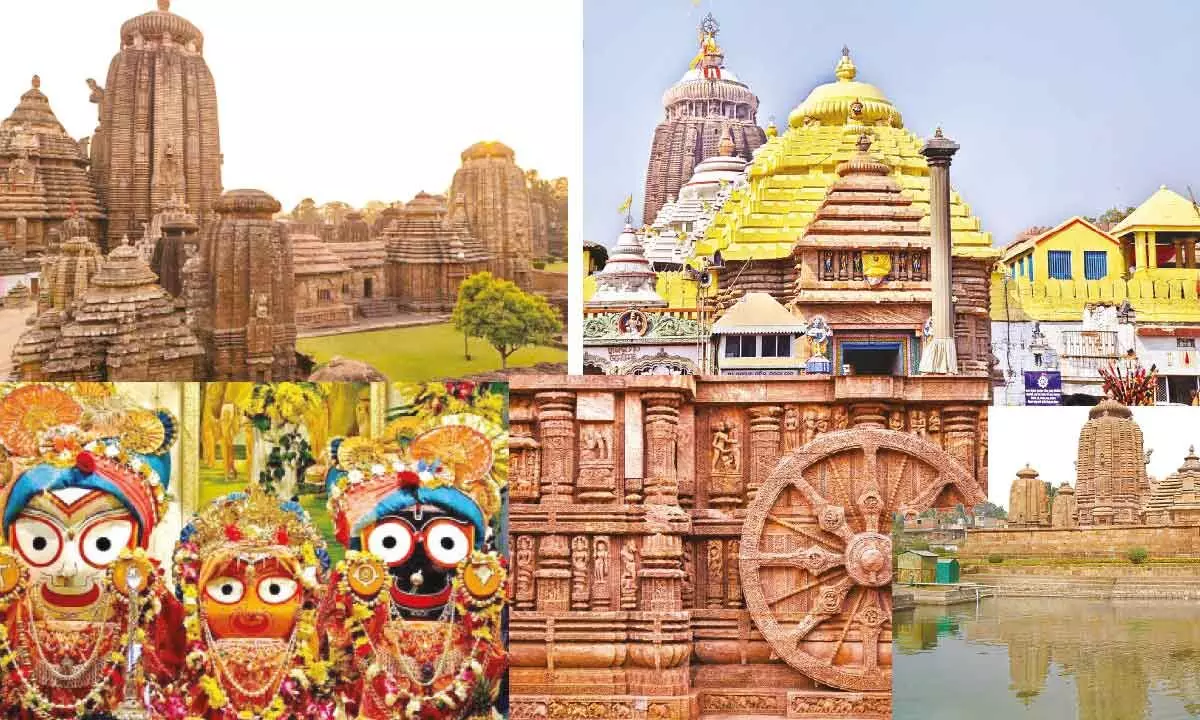Prominent Shrines in the land of Kalinga

Orissa is known for its rich culture and heritage. It has become a popular tourist destination where people visit the state for witnessing the marvelous handiwork of the ancient people and other unique features of the temples.
Rashmi Bhumi Reddy has brought you insights into the 5 prominent ancient Hindu temples which are located in the land of Kalinga.
Lingaraj Temple, Bhubaneswar
It is one of the largest and most ancient temples in Orissa’s capital city of Bhuvaneswar. Lingaraja Bhuvaneshwari, an incarnation of Lord Shiva, is worshipped. The shrine was constructed in the eleventh century by the Somavamsi dynasty monarchs, with later additions made by the Ganga kings. The epitome of Kalinga architecture is displayed there. The temple’s main tower is 180 feet tall.
Bindusagar Lake is the temple’s unique feature. According to mythology, the lake contains a few drops of water from each of India’s major rivers.
Shree Puri Jagannath Temple, Puri
One of Orissa’s most well-known shrines, Shree Puri Jagannath Temple is famous for its annual Rathayatra or Chariot celebration. This ceremony is considered to showcase the world’s oldest and largest chariot procession. Ananta Varman Chodaganga Deva, a well-known ruler of the Ganga Dynasty, constructed the temple sometime in the 12th century. The European sailors also call it the “White Pagoda”. Jagannath is used to worship Lord Vishnu. The wooden picture of Jagannath is ceremonially replaced every 12 or 19 years by an exact replica, in contrast to the stone and metal images of Lord Vishnu that are present in the majority of Hindu temples.
The Colossal Chakra, which is more than 20 feet tall and was erected at the top of the temple centuries ago, is what makes this temple unique. It is stated that the chakra seems the same regardless of where or how you are looking at it.
Brahmeswara Temple, Bhubaneswar
The Brahmeswara Temple is one of Orissa’s other popular Shiva Shrines. Brahmeswar is the incarnation of Lord Shiva that is worshipped. Kolavati Devi, the mother of Udyotakesari, the ruler of the Somavamsi dynasty, constructed it sometime in the ninth century. It is regarded as a marvel of medieval Indian architecture since it was sculpted out of stone pyramidal structures.
This shrine’s distinctive characteristic is its complicated structural arrangement and architectural design. At a location called Siddhatirtha, four Natyasalas were used to construct it. Aside from the main temple at the center of the sanctum, the four additional shrines are situated at the four corners of the temple.
Konark Sun Temple, Konark
It is a prominent shrine that honors Lord Surya, the Hindu Sun god. It was constructed in the 13th century. King Narasimha Deva I of the Ganga dynasty constructed the temple. The shrine’s exterior features a 100-foot-tall chariot with enormous wheels and stone-carved horses. It occupies a 12-acre area. By seafarers from Europe, the shrine is also known as the “Black Pagoda”.
The temple’s unique feature is the chariot wheel, which was built and placed in such a way that it can tell the time. The carved wheels and geometric designs are utilised as sundials. Furthermore, there is no deity worship here, unlike other temples.
Maa Samleshwari Temple, Sambalpur
It is devoted to Samaleswari, also known as Samalei Maa, the goddess. King Balaram Dev of the Chauhan Dynasty erected the shrine in the late 16th century.
The square sanctum where the deity is housed is what makes the temple unique. It is four steps down from the circumambulation, which is supported by 12 stone pillars and is 10 feet wide. There are eleven Parswa devis embedded in the sanctum’s exterior wall.

















